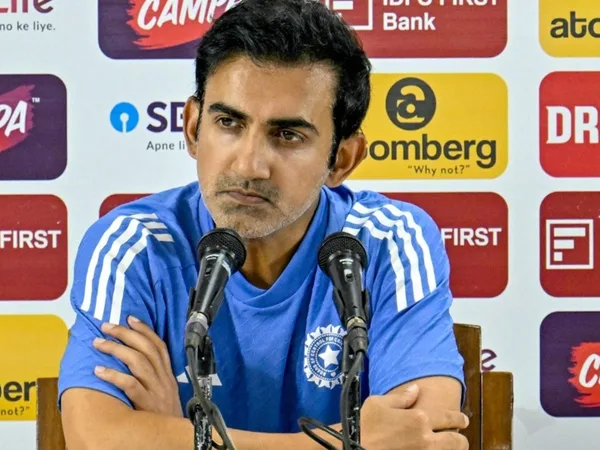
India pushed Virat Kohli up to No.3 in the first innings of the Bengaluru Test against New Zealand today (October 17).
Shubman Gill, India's designated No.3 in Tests these days, was ruled out of the match due to a niggle and was replaced by Sarfaraz Khan in the XI. However, it wasn't a like-for-like replacement in the sense that Sarfaraz slotted in straight at No.3 in place of Gill. Instead, India promoted Kohli to No.3 when they lost their first wicket in the seventh over of the morning session today, raising eyebrows.
A first in eight years
Kohli has made a home for himself at No.4, like many of the greats of the game have over the years. 148 of his 196 Test knocks have come at No.4, with the next most frequent spot being No.5 with 31 innings, where he used to bat before the retirement of Sachin Tendulkar. However, he had only batted six times at No.3 before today, with his last outing at the position coming way back in 2016 against the West Indies.
Kohli didn't have a great record at No.3 coming into the game, having scored only 97 runs at an average of 19.4 with no fifty-plus scores to show. The numbers only worsened for him as he was dismissed for a duck today, thanks to a steeply rising back of length ball by Will O'Rourke that took his gloves and flew to leg gully.
Why then, despite a poor (albeit with a small sample size) record at three, a settled slot at four, and in extremely tough conditions for batting, was Kohli thrown into the hotspot?
No specialist No.3 in the XI
In Gill's absence, there was no specialist No.3 batter in the XI. Sarfaraz, who replaced Gill, had batted four times at No.6 and once at No.5 in Test matches before today, and is primarily a middle-order batter in domestic cricket for Mumbai as well. Faced with overcast conditions and a spicy pitch providing seam movement and bounce to a troika of quality pace bowlers, the Indian management (perhaps rightly) decided to not throw the Test newbie into unfamiliar territory.
The other option was to push KL Rahul up to No.3, leaving the rest of the batting lineup as is. Rahul has been one of, if not the most flexible of Indian players since his debut. He has batted at all positions from No.1 to 6 except for five. At No.3, he has batted five times, scoring 88 runs at 17.60. He has also opened the batting with success outside of Asia in the past.
Lately, however, Rahul has found a new role in the middle order and has been doing well. Since the start of 2023, he has batted nine times between No.4 and 6, scoring 327 runs at 40.87, including a memorable hundred in South Africa. With the Australia tour coming up, India might be looking at him as a certainty at No.5 and No.6 (which is where he came out to bat today as well) to beef up their middle order, which is perhaps why they didn't want to tinker around with his batting position and push him up to No.3 as a stop-gap solution for this Test.
Kohli, on the other hand, is secure at No.4, despite going through a rough patch. Being the senior-most batter of the side, and arguably the best suited to deal with the conditions on offer, he had little to lose moving up a slot for one game. That it didn't work out is a separate matter, but given the alternatives India had, it was a move that made sense.
Also read: 'Ganguly, Tendulkar never wanted to go up' - Manjrekar lauds Kohli for move to No.3
Eventually, India folded for 46, their third-lowest Test total ever, with Matt Henry picking 5-15. This means India would need a huge effort with the bat in the second innings, providing Kohli an opportunity to rectify his first-innings failure at No.3.
Follow Wisden for all cricket updates, including live scores, match stats, quizzes and more. Stay up to date with the latest cricket news, player updates, team standings, match highlights, video analysis and live match odds.








